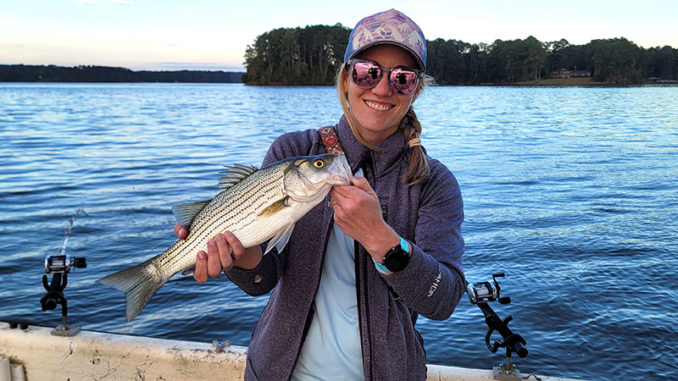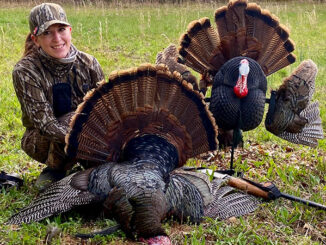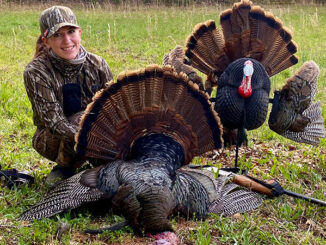
Early start can mean fast action for Clarks Hill stripers, hybrids
Fishing for stripers and hybrids on Clarks Hill this month isn’t much different than any other month for Capt. Eddie Mason of Mason’s Guide Service (803-637-5395).
“I start the day at first light, anchor, then drop live baits down and place the rods in rod holders,” he said.
He looks for baitfish, by scanning the surface of the water, and by checking his depthfinder for activity.
“If baitfish are present, stripers will be around. They constantly follow schools of bait, and when they’re hungry, they’ll eat,” he said.
Mason said it’s not as simple as just casting your lines out anywhere. He fishes here almost every day, and keeps tabs on what the fish are doing and what areas they are frequenting. That helps him start each morning with some level of confidence.
“But for folks who don’t fish here very often, you can find spots to fish simply by locating baitfish on your depthfinder,” he said.
Even though he doesn’t specifically look for stripers on his depthfinder, he won’t ignore them when he sees them.
“Stripers don’t always show up because sometimes they’re so close to the bottom that they just blend in. So I watch for baitfish. But if I happen to see a school of stripers, that’s even better.”
Keep it fresh
Getting an early start to the day is a big plus for Mason.
“I like to get on the water early enough that I can be on my first spot as the sky is just breaking light. Stripers will feed throughout the day, but that first bite is often so fast and furious that you can only fish one rod at a time. I think throughout the day, different schools of stripers turn on and off, but at first light, it seems like every school in the lake is feeding aggressively,” he said.
He uses fairly basic gear. Baitcasting reels on medim-heavy rods, stout rodholders, sharp hooks and quality line with good knots tied in them is all it takes.
“You want to keep fresh bait on your hooks. That’s one of the most important factors. When a striper or hybrid hits your bait, but doesn’t take it, they often kill your bait. And you’ll usually not get another bite on that bait,” he said. “So when you miss a fish, or when the fish just hits but doesn’t really bite, reel in and put a fresh bait on.”





Be the first to comment